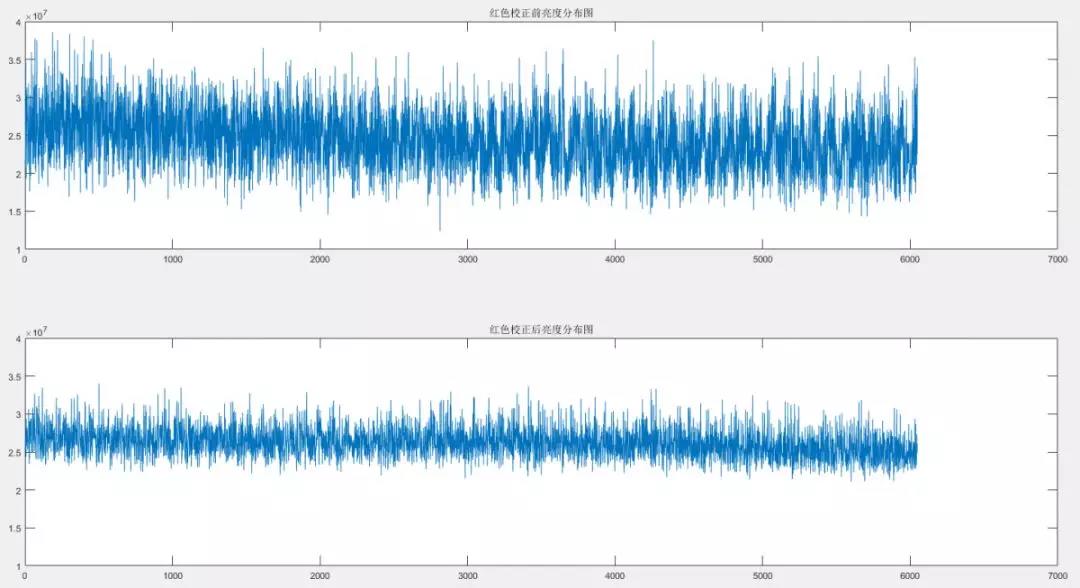
Principle of brightness correction
01•Brightness uniformity correction, mainly used in the display screen spliced by the same batch of modules with brightness differences, through the digital single-lens reflex camera or scientific-grade refrigeration camera to take red, green and blue photos on the LED screen, and identify and measure The brightness value of each lamp point adjusts the lamp points with uneven brightness to a uniform brightness value, so as to achieve the purpose of uniform brightness.
•By comparing the brightness distribution statistics before and after correction and the display effect of the display screen, the uniformity of the brightness of the LED display screen has been significantly improved, and the phenomenon of "pitting" is basically not observed by the human eye.
•Since the brightness correction is to adjust the brightness of all lamp points uniformly, and considering the problem of lamp life, the brightness of the corrected display screen will be reduced compared with that before the correction, but it will not affect the look and feel.
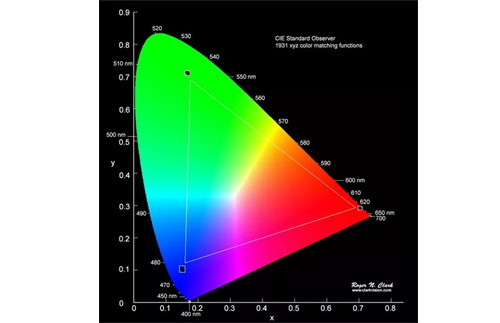
Principle of chroma correction
02•From the perspective of chromaticity, the chromaticity of the LED can be expressed as Yxy, where Y represents the brightness of the LED, and x and y are the chromaticity coordinates. The chromaticity correction will correct both the brightness and the chromaticity. For a display with chromaticity differences, when the color coordinates are drawn on the chromaticity diagram, the color coordinates appear as scattered patches. The purpose of chromaticity correction is to transform the unevenly distributed color gamut through the color gamut transformation technology. To the same common color gamut, that is, the internal minimum color gamut (internal triangle range) of all the light points on the display.
•In layman's terms, chromaticity correction is to make LEDs with chromatic aberrations consistent with each other through complementary colors. For example, there is a difference in chromaticity between red, and by adding a small amount of blue and green to other LED lights, the two kinds of red are consistent. If there is a color difference between green, a small amount of red and blue are added, and if there is a color difference, blue is added. A small amount of red and green.
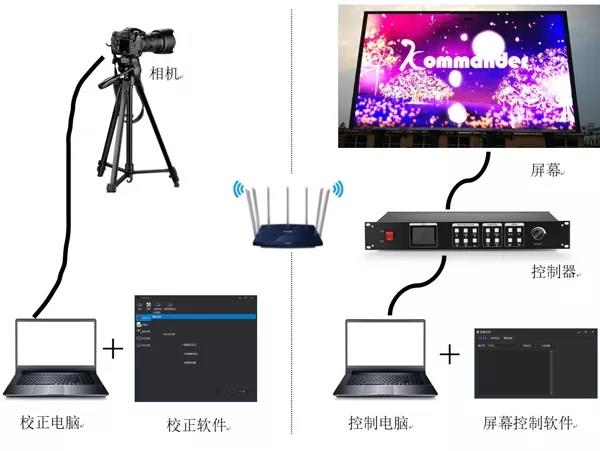
The characteristics of Kystar point-by-point correction system
03•→ Supports point-by-point brightness correction for the entire screen
•→Support splicing brightness and dark line adjustment during point-by-point brightness correction
•→The screen has edge wrapping when the colorimetric correction is supported
•→Support full-screen color-by-light color correction
•→ Supports gradual shooting of chroma images, and the correction rate is doubled (Kestar scientific camera)
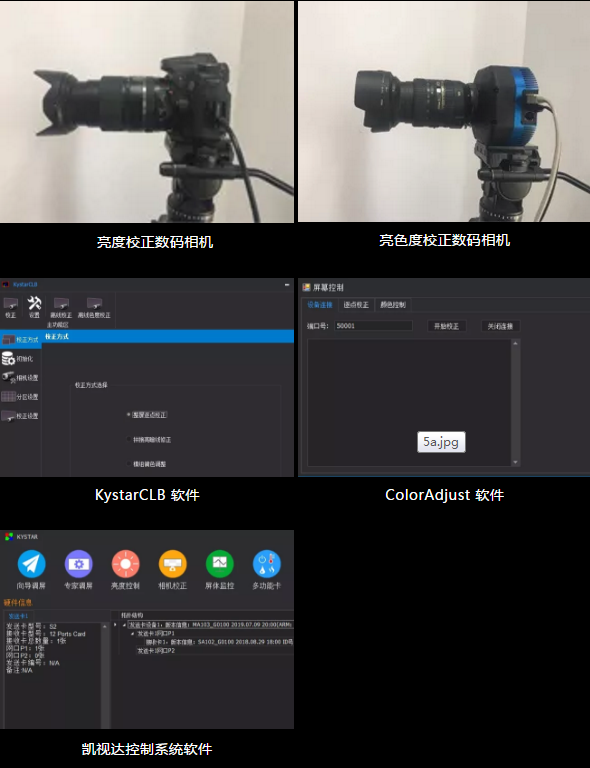
Point-by-point calibration equipment list
04•hardware
•→ 2 computers, equipped with network cable or routing equipment, high configuration processing speed is recommended.
•Can be connected to the same local area network, and can be directly connected through a network cable. If you need to take a full-screen point-to-point correction image at one time, you need a computer to support the corresponding size video signal.
•→ One camera (with lens).
•Canon 70D or Canon 7D Mark II, equipped with USB extension cable and camera power adapter, tripod. Chromaticity correction requires the use of chromaticity correction scientific cameras provided by Kystar
•→ Sending device that supports point-to-point output, cooperate with the host computer software to display point by point.
•software
•→ KystarCLB calibration software.
•During the calibration process, it is responsible for taking pictures of the screen and the correction process.
•→ ColorAdjust screen control software.
•During the calibration process, it is responsible for communicating with KystarCLB to control the screen display.
•→kystar control system software.
•Responsible for adjusting the screen and downloading the corrected data.
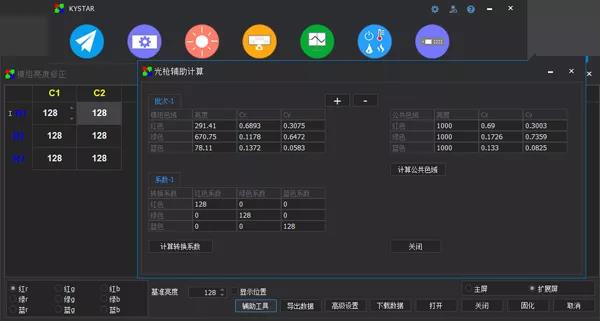
Module Quick Calibration Overview
05•When there are a large number of LED display modules on site, and there are ultiple batches of modules mixed, the chromaticity difference betwmeen the modules will usually show. Aiming at the insufficiency of the long time and slow speed of on-site screen calibration by most calibration systems, Kaisda launched a quick calibration of chromaticity of modules. Through simple data input operation, the brightness and chromaticity of the screen modules can be quickly reached uniformity.
•Features of rapid correction of chroma of module:
•→Simple, easy to build environment, only one colorimeter is needed to cooperate with Kystar control system software
•→Fast and efficient, saving time to download correction data
•→High calibration accuracy, measure the chromaticity of the module through a high-precision colorimeter, combined with the KTV color gamut adjustment algorithm and color mixing technology to achieve the same brightness on the screen and minimize the loss of bright chromaticity.
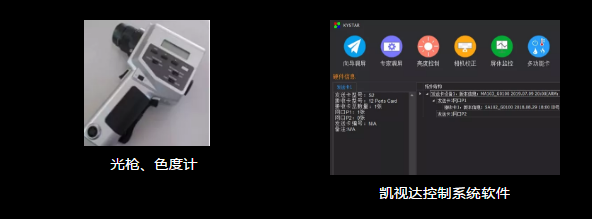
Module quick calibration equipment list
06•hardware
•1 computer, 1 colorimeter (for measuring chromaticity information of different modules)
•software
•Kystar control system software. Responsible for adjusting the screen and processing the chromaticity of different modules, calculating the corrected data of the color gamut and display adjustment of each module, and quickly downloading the adjustment coefficients to the hardware of Kystar.

Brightness correction application
07•After brightness correction, the entire screen is more pure and transparent, and the "smear" of the display basically disappears.
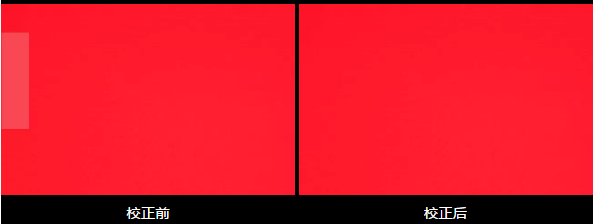
Chromaticity correction application
08•For screens with obvious chromaticity differences, the visual effect is greatly improved after using the Kystar chromaticity system. No matter the image or video is viewed, the human eye can hardly feel the chromatic aberration.
| File Name | Date | Download |
|---|



